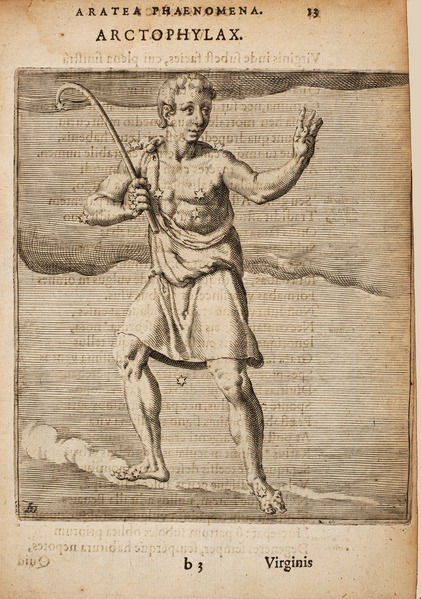Arcturus is the brightest star in the northern constellation of Boötes. With an apparent visual magnitude of −0.05, it is the fourth-brightest star in the night sky, and the brightest in the northern celestial hemisphere. The name Arcturus originated from ancient Greece; it was then cataloged as α Boötis by Johann Bayer in 1603, which is Latinized to Alpha Boötis. Arcturus forms one corner of the Spring Triangle asterism.
Arcturus is the brightest star in the constellation of Boötes.
Size comparison between the Sun, Beta Ursae Majoris, Pollux, and Arcturus.
Arcturus next to the head of Comet Donati in 1858
Arcturus in Arctophyllax
Boötes is a constellation in the northern sky, located between 0° and +60° declination, and 13 and 16 hours of right ascension on the celestial sphere. The name comes from Latin: Boōtēs, which comes from Greek: Βοώτης, translit. Boṓtēs 'herdsman' or 'plowman'.
Boötes as depicted in Urania's Mirror, a set of constellation cards published in London c. 1825. In his left hand he holds his hunting dogs, Canes Venatici. Below them is the constellation Coma Berenices. Above the head of Boötes is Quadrans Muralis, now obsolete, but which lives on as the name of the early January Quadrantid meteor shower. Mons Mænalus can be seen at his feet.
The constellation Boötes as it can be seen by the naked eye
A digital rendering of Tau Boötis b
A Quadrantid captured by an all-sky camera during a 4-second exposure







